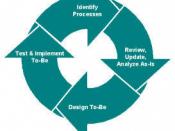Section 1: The Australian Business Cycle
Overview of the Australian economy
The Australian economy over the past 15 years has been relatively stable having the ability to ignore various crises that have effected the world to date, such as the Asian financial crises since 1997-1998, Japans slow growth and the American economies 'dot com' bust. Other things include the employment rates have been at its lowest for 30 years, insignificant amounts of government debt and constant budget surpluses (The economist, 2005, p2). However more recently the GDP growth has slowed down to 1.5% in 2004 and a mere 0.1% in the 2nd quarter of 2005 (ABS, 2005). (OECD as quoted by The Economist, 2005) say that this is due to the fact that labour is in short supply and 'poor infrastructure bottlenecks'; the reasons for this will be discussed below. Lastly an adverse side of the Australian economy is the current account deficit, which reached a new of 7.1%
in the 1st quarter of 2005 (ABS, 2005), quotes by (Edwards, 2005) chief economist of HBSC state that 'We have failed to invest sufficiently to sustain the upswing'. Business confidence remains high, however the instability of current oil prices may be influential within the long run, with businesses passing on costs to the consumer.
The Business cycle
Keynesian analysis of business cycle
The Keynesian analysis of the business cycle involves the use of aggregate demand, therefore a demand side issue of the business cycle (Sloman & Norris, 2004, p285). Firstly we shall define what aggregate demand is.
AD = Cd + I + (X-M)
The above formula provides an overview on the explanation of aggregate demand, whereas Cd = consumer spending on domestically produced goods and services, I = investment expenditure by local firms, G = Government expenditure and (X-M) represents...


